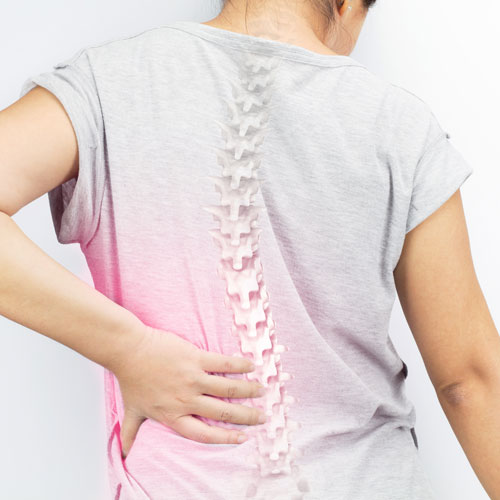How Can I Manage Mild Scoliosis?

Scoliosis is categorized into three levels of severity: mild, moderate, or severe. Of these, mild scoliosis is by far the most common category that the population falls into (as much as 50%). Today, we will dive into how to diagnose and treat mild scoliosis with options like chiropractic care, particularly the world renowned approach that we have used since 2013.
What Does Mild Scoliosis Look Like?
Mild scoliosis is defined as an abnormal curvature of the spine that ranges from 10 to 25 degrees. This is measured primarily via an x-ray, where something called a Cobb Angle is determined. Mild scoliosis can be hard to detect, yet it is most often recognized by the following characteristics:
- Clothing that doesn’t fit evenly
- Uneven leg length
- Poor posture, particularly a forward head posture
- Hips, shoulders, or ribs that appear uneven or rotated to one side
- Difficulty with core based movements or general discoordination with movement
It’s important to keep in mind that some of the above characteristics are common, particularly with a growing adolescent body, anyways. However, if more than one of the above issues is detected it could be more than growing changes and is worth talking to your doctor.
How is it Diagnosed?
Scoliosis is most often diagnosed in adolescence, particularly in young girls that are prepubescent. However, it can also affect boys and adults as well. Diagnosis is often delayed with mild scoliosis because it can go undetected when there are minimal symptoms. However, getting a diagnosis as soon as possible is important for monitoring the spine curvature. That way you are able to prevent the onset of unnecessary symptoms and progression over time.
A scoliosis screen can be done with a physical assessment. For example, many kids will undergo a screen at school by bending forward to assess for any abnormal rotation or rib humps in this position. To confirm a positive screen, an x-ray is done by a health professional, such as an orthopedic doctor that specializes in the spine or a chiropractor. Typically, an x-ray is done from two angles: the front and side. Imaging may be done in various positions, such as sitting or standing, to adequately detect any abnormalities and get a proper diagnosis and angle measurement.
What Are the Possible Symptoms?
What symptoms you will experience with mild scoliosis can vary significantly. In fact, the degree of the spine curvature does not necessarily correlate to the degree of symptoms present. Scoliosis affects each person differently and will need to be assessed individually. Thankfully, mild scoliosis can often be symptom free or managed well with proper treatment. Common symptoms associated with mild scoliosis include the following:
- Pain- mild to severe
- Low back
- Neck
- Shoulders
- Hips
- And more (any body part can technically be affected)
- Headaches
- Migraines
- Muscle aches
- Neurological symptoms (more common in adults with a spine curvature progression or secondary degeneration)
- Tingling
- Numbness
- Shooting pain
- Bowel or bladder changes (see your doctor immediately if this occurs)
- Balance issues
- Discoordination
What Are My Treatment Options?
Mild scoliosis best responds to conservative treatment. What type of treatment your body will respond to best will depend on your preferences and symptoms. Common treatment recommendations include exercise, physical therapy, chiropractic care, and regular medical observation to monitor any changes. Of these options, the one specialty that boasts having specially certified and trained experts in scoliosis management is chiropractic care. No matter what treatment direction you choose to follow, the goal is to minimize the onset of symptoms and keep them manageable to prevent future complications. This is ideal to prevent progression of the spine curvature, which is harder to manage.
Utilizing Chiropractic Care for Mild Scoliosis
Chiropractors are experts in spine health. Thus, any certified chiropractor can potentially yield benefits for managing your scoliosis. However, to take it to the next level, there are chiropractors that specialize specifically in scoliosis. There are a couple of different certifications available to chiropractors for becoming scoliosis experts. One of the most scientifically supported options is a combination of ScoliBalance® and ScoliBrace®.
Finding a Scoliosis Expert
We offer a patented diagnostic and treatment system that makes our clinic a leader in managing scoliosis. Our focus is on effective diagnosis and treatment strategies that help patients reach their goals and live the life they want. You can expect the best possible care when working with a health professional, like a chiropractor, that is certified in ScoliBalance and ScoliBrace. When indicated, bracing can be an integral part of scoliosis treatment to prevent, manage, or sometimes even reverse an abnormal spine curvature.
The Bay Area Scoliosis Center in Alameda and Oakland, CA was one of the first California clinics to become ScoliBrace certified in 2013. We have had great success with the use of these diagnostic and over-corrective treatments for scoliosis. We are dedicated to helping each scoliosis patient reach their goals and overall potential. Whether you or a loved one has already been diagnosed with scoliosis, or you suspect scoliosis, we would love to work with you!
Maximizing Your Results with CBP
In addition to specializing in ScoliBalance® and ScoliBrace®, the Bay Area Scoliosis Center is also certified in Chiropractic BioPhysics® (CBP®). This makes for a very potent combination of specialized knowledge when it comes to your spine health. CBP is the leading evidence-based approach for addressing postural abnormalities that affect spine alignment and underlying nerve integrity. Thus, our clinic can provide unique treatment recommendations that optimize your spine alignment, manage your scoliosis curvature, and help you feel your absolute best. Not many clinics have both of these highly rated certifications. Thus, if you can get treatment in the Bay Area, we provide you with great potential results when you come in for that first consultation and beyond.
What to Expect from Chiropractic Treatment for Mild Scoliosis
Deciding how to manage mild scoliosis can be tricky. If you aren’t experiencing any symptoms or they are very mild, it can be tempting to blow off any formal treatment and take more of a “wait and see” approach. However, this can lead to bigger problems down the road as symptoms appear and/or if the curvature progresses. Thus, getting formal treatment for prevention, management, and beyond is recommended for maintaining the highest quality of life possible.
Initially, you will undergo an in-depth examination to determine any spine dysfunctions that should be formally addressed. Then, you will work with your chiropractor to design a treatment program that helps you feel in control of your scoliosis. Treatment options can vary, but often include one or more of the following:
- Spine adjustments. This can help reduce strain on local neural tissues and optimize spine alignment, reducing the risk of future degenerative issues and neurological damage. The approach for addressing spine adjustments when scoliosis is present will be different and yield different results when compared to traditional chiropractic manipulation.
- Posture and exercise training. Restoring and promoting the best possible posture is ideal for the spine, whether scoliosis is present or not. Your chiropractor will make unique recommendations based on your spine’s specific curvature. The goal isn’t usually to try to hold a perfect posture that is comparable to someone without scoliosis, but rather learning to adapt your posture to what works best for your unique needs while minimizing strain. Utilizing specific exercises to encourage balanced muscle use and alignment can help you feel best in your own skin and posture.
- Bracing. A scoliosis brace isn’t always indicated for mild scoliosis. Yet, it can be a great tool with the right cases. Bay Area Scoliosis Center specializes in the use of the patented ScoliBrace. This dynamic brace can help retrain local muscle groups to optimize spine alignment. The over-corrective approach helps prevent spine curvature progress and sometimes even reserve curvatures.
- Lifestyle recommendations. A holistic healthcare provider like a chiropractor will always be keeping tabs on your full body (and mind) health. Thus, they might discuss other areas of your health with you to maximize your results. Certainly, a healthy body will be able to manage scoliosis better than an unhealthy one. They might talk to you about weight loss, exercise, nutrition, stress management, and beyond.
Get the Care You Need
When it comes to mild scoliosis, it’s always better to be proactive with your spine health and general health. This will help you thrive in your life for decades to come and prevent complications. Prevention and lifestyle optimization are always better than managing a problem like scoliosis once it becomes hard to bear. If you wait that long, it’s not too late! However, it will take a lot of effort to feel like you’re back on track. If you’re dealing with scoliosis on any level, it’s time to be your own advocate and get the care you deserve.
Remember, at the Bay Area Scoliosis Center in Alameda and Oakland, CA, we are ready to help you with all of your scoliosis needs. Our unique combination of ScoliBalance®, ScoliBrace® and CBP certifications makes us one of the best options out there for you! Give our clinic a call today to discuss your options and get started as soon as possible.


